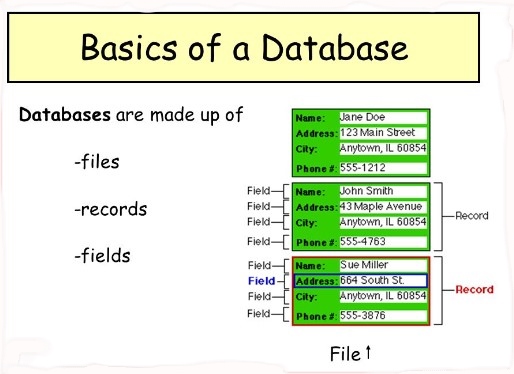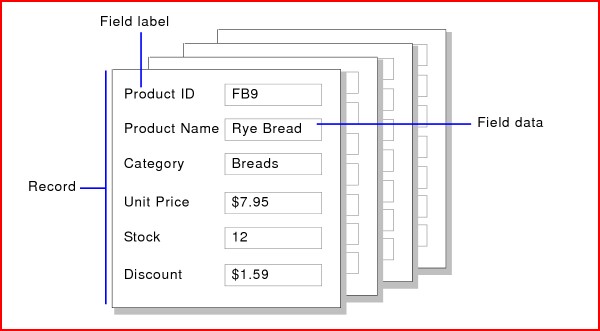Computer Genealogy Programs - How Do They Work?
Author: Robert W. Penry @ 2021
Every genealogy program has a database. It is a file of every individual that you enter in your program. Whenever you enter an individual, the record is created. A record is a collection of information about an individual.
Within a record are pieces of information. Each type of information is a field in the record. The same fields are in every record. But the information in the field differs from individual to individual.
The following is an example of three records – with just a few fields. Actually the number of fields in a genealogy program record are well over a hundred.
RECORD ONE
NAME: Bodine, John Thomas
SEX: M
DOB: 11Mar1821
POB: Marion, Marion, Ohio, USA
DOM: 05NOV1845
POM: Franklin, Franklin, Ohio, USA
DOD: 14Dec1862
POD: Kinston, Lenoir, North Carolina, CSA
RECORD TWO
NAME: Clampett, Ellie Mae
SEX: F
DOB: 05Feb2001
POB: Hunnewell, Greenup, Kentucky, USA
DOM: 25Dec2019
POM: Las Vegas, Clark, Nevada, USA
DOD:
POD:
RECORD THREE
NAME:, Drysdale
SEX: U
DOB:, , 2022
POB:, , England, British Isles
DOM:
POM:
DOD:, Apr2022
POD:, , , Atlantic Ocean
As you view the sample records, you notice that all records in the genealogy database have the same fields. You should also notice that if a particular piece of information doesn’t exist, then the field is blank. Is Ellie Mae living? She has no Date of Death (DOD). She is either still alive, or if she died, we don’t know when or where.
The individuals in records one and three are certainly deceased. Record three obviously was never married since he was less than five months old at death.
Did you notice that John Bodine died in the Confederate States of America? By the way, the Battle of Kinston was fought on 14th of December, 1862. Does this mean that we should examine some military records?
Did you notice the place markers in fields? The comma (,) marks show where missing information in the field would appear. For record three, DOB:, , 2022 the place markers indicate that this is a valid record. As a programmer, I know that this field is right justified. This means that typing 2022 in the field, slides the data to the right, leaving the day and month area of the field blank. The program does this automatically as part of its edits.
Note that all fields have a field size. The DOB field size is 9 digits dd/mmm/yyyy. Even though the name and date fields have different lengths of information, there is a maximum field size for them. Actually the field size limit for all name and location fields is 255 characters.
Are these the field size limits for these fields in GEDCOM? Absolutely! In order to import/export GEDCOM. All genealogy programs have field lengths that match GEDCOM field lengths.





